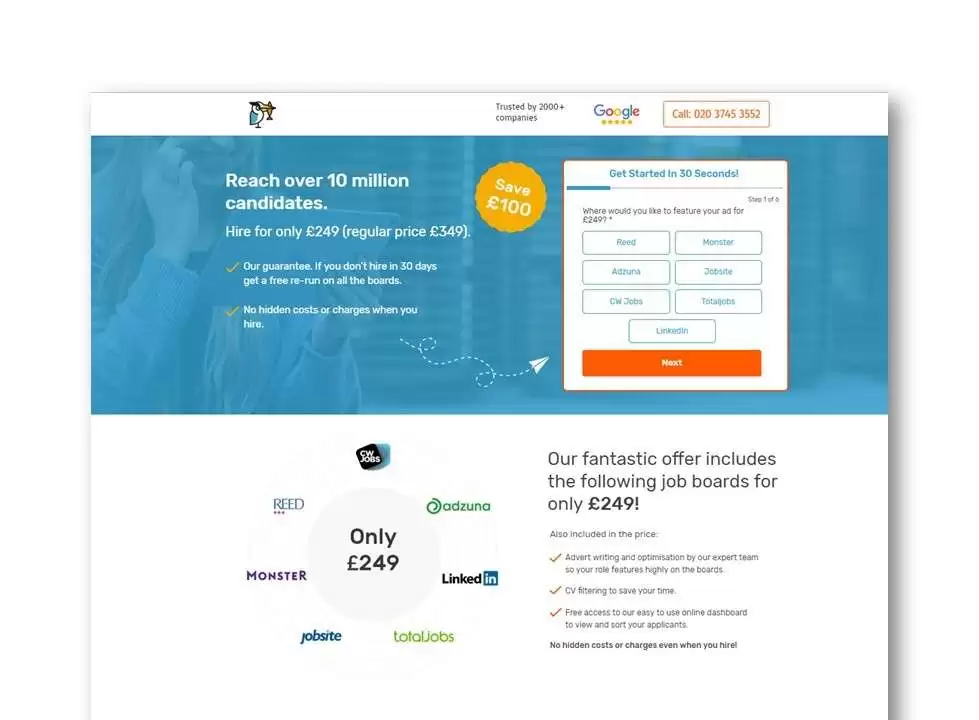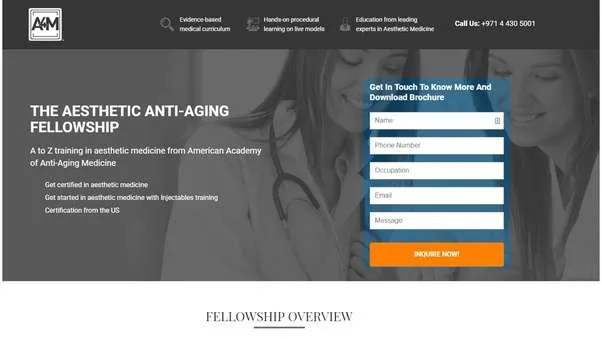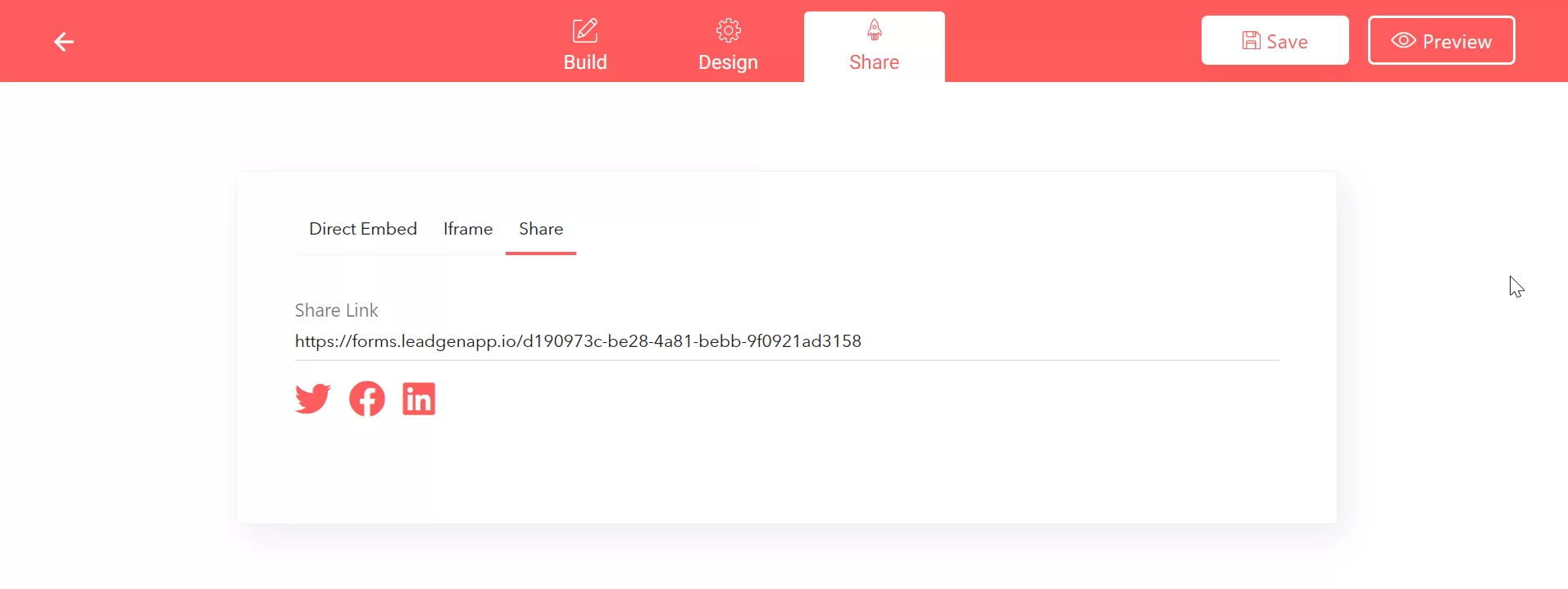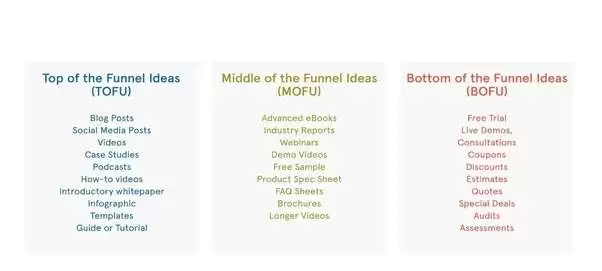Simple Steps You Can Take Today To Generate Leads Without a Website
Websites are a great channel for lead capture. They can host a variety of different pages to educate, qualify and convert leads.
The problem: A lead capture website is expensive to build and time-intensive to maintain. Furthermore, there are more efficient ways to generate online lead capture. That's the question we like to explore further: How can you capture leads without a website? After reading our guide you'll be able to even think “I can do my PowerPoint presentation for me on this subject
Let's take a look at lead generation pages other than common lead capture websites:
An easy and effective tactic are landing pages.
Let’s explore the differences between websites and landing pages and learn how to increase conversions from paid campaigns. First, let’s define each of them and understand what each one is used for.
Homepage vs Landing Page
Landing pages are a form of a web page designed to receive traffic from one or several specific sources (such as an ad or email campaign). It is intended for a very specific purpose and prompts visitors to take a well-defined action.
The Homepage, on the other hand, is the main page of a website that gives a comprehensive overview of what a website is about. It often has standard links that point to other important permanent pages of your website. It is designed to encourage exploration.
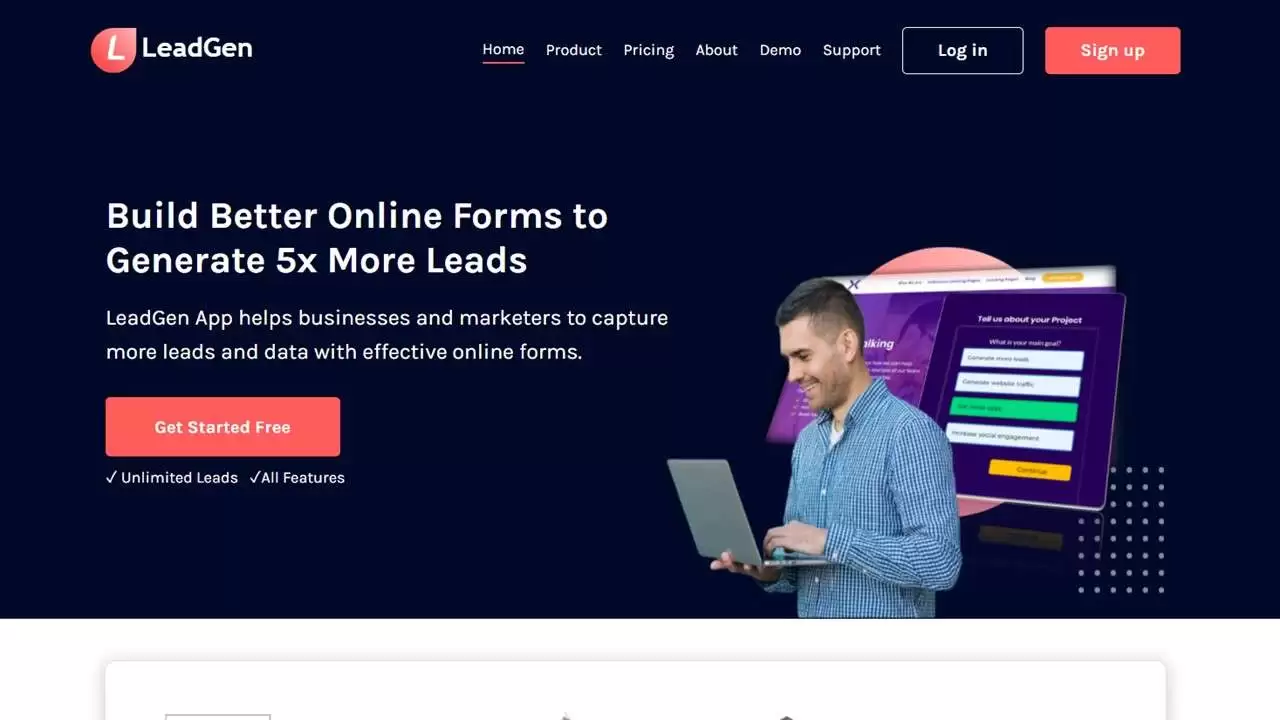
LeadGen homepage design
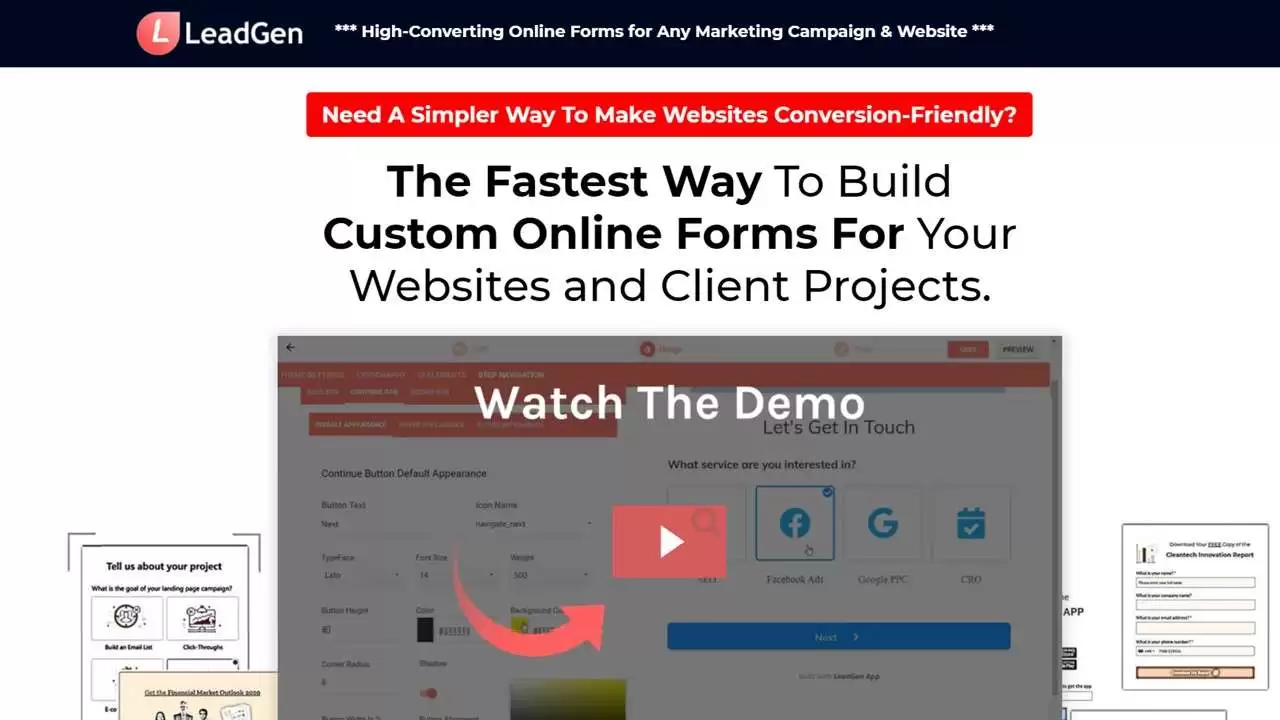
LeadGen landing page design
Let’s understand how the two differ.
Purpose:
The first major difference between a Landing page and a Homepage is the intended purpose they serve. If the purpose is to get leads, clients or sales then Landing pages can do the job. On the other hand, if the purpose is to build a brand, provide information to the clients about the offerings then Homepage is the best for the task.
However, there is a plethora of information nowadays and people are busier than ever. With a continuous decrease in human attention span we are left with just 5 seconds to motivate someone to take an action and that is possible only with the help of a landing page as it enables to target the audience, offer them something of value, and convert a higher percentage of visitors into leads via a web form and eventually into customers.
Conversion:
Landing pages have just one goal i.e. conversion. Homepages and lead capture websites, on the other hand, are build for multiple reasons. On a typical homepage, you’ll find different sections such as a navigation bar, site links, blogs, social media links etc. These links help the visitors get to where they need to go or interact with the website in the way you want. On a typical Landing page, you will find a headline, subheading, elements which compliment to one purpose, get user to convert which on a B2B site mostly is a lead capture form.
Call-to-action:
A major difference between a homepage and a landing page is that a landing page has a Call-to-Action (CTA) button that encourages visitors to click on it. A CTA can be anything from filling out a form to calling a phone number or buying a product. A lot of times you will see an offer associated with the CTA e.g.
“Sign up for free” “Get your free eBook”. These offers encourage the audience to click on the CTA button as they feel they are getting something in return for the information they are providing. In contrast to landing pages, homepages do not typically have a CTA because it operates more like an information page about a company and its products or services.
Versioning:
With a Landing Page, you can create multiple versions very quickly compared to a homepage. Using tools like Unbounce, Instapage you can create multiple versions, AB test campaigns pretty quickly. These tools can help them become high converting landing pages. Making changes to a homepage is not very straightforward as it would require a web developer to make those changes. Landing pages are typically driven and managed by marketers vs a website which is ideally managed by an IT team.
Relevancy:
Sending visitors from a PPC or email campaign to a website’s homepage will fail to deliver on the promise inherit in the call to action due to the static nature of homepages. Landing pages can be customised to include dynamic text from Ads / Emails and add to the trust and being relevant score.
Online Lead Capture Forms - Where To Use Forms Without a Website
Custom Landing Pages: Content + Distinct Lead Form Offer
Custom-designed landing page in recruitment for lead generation purpose
The best channel for online lead capture is with a custom landing page. Landing pages are focused on a single objective, e.g. promoting a free offer, a webinar, newsletter or a product.
A landing page is similar to a lead capture website, however, it is just a single 1-page website.
Creating a landing page can be done in a few days, for a simple in less than a day. Lead capture website development can take you ages, often more than a month.
If you don't have a lead capture website yet, consider building a landing page with a single offer for capturing leads
Online lead capture forms: Quick & Easy
A landing page with lead form - Interface to capture user data
A lead form provides an interface to capture user data including important information that qualifies a user as a lead, e.g. email address or phone number.
You can use forms in combination with a landing page, simply by embedding a form into the page content.
You can embed the form into your web-page, but you could also send out the link directly or via instant messaging like Whatsapp and Facebook Messenger.
LeadGen has a direct link share option. Build your form, go to the "Share" section and either copy the link or use the social sharing options.
Direct link share option in LeadGen App
If you want to use forms on a landing page, you can use the iframe or direct embed codes.
LeadGen forms are platform-agnostic, which means you can use them across different channels. You can use them in any HTML page-builder platforms like Wordpress, Wix, Instapages, Unbounce, Clickfunnels, etc.
Forums & Social Sites: Share Forms Where The Attention Is
Social media is a great way for online lead capture, both via organic posts as well as paid media like a pay-per-click advertisement.
You can offer gated content, promoted via your posts. Gated content is online content that needs an email opt-in or other forms of lead submission so that the user gets access.
For this email opt-in, you can also use online lead forms that you simply send out on social media platforms.
You can offer gated content at different stages in the user journey. The image below lists some content ideas that can work well for lead generation, for example, case studies, how-to videos, tutorials, ebooks, webinars, etc. Social media is typically the top or middle of the funnel in case you engage with an existing community.
Content ideas offer in return for lead generation
Start here with LeadGen App to build a simple lead form and start sharing it, without a website. For simple forms, it takes less than 10 minutes to build a form. Try it out and start generating more leads today!

